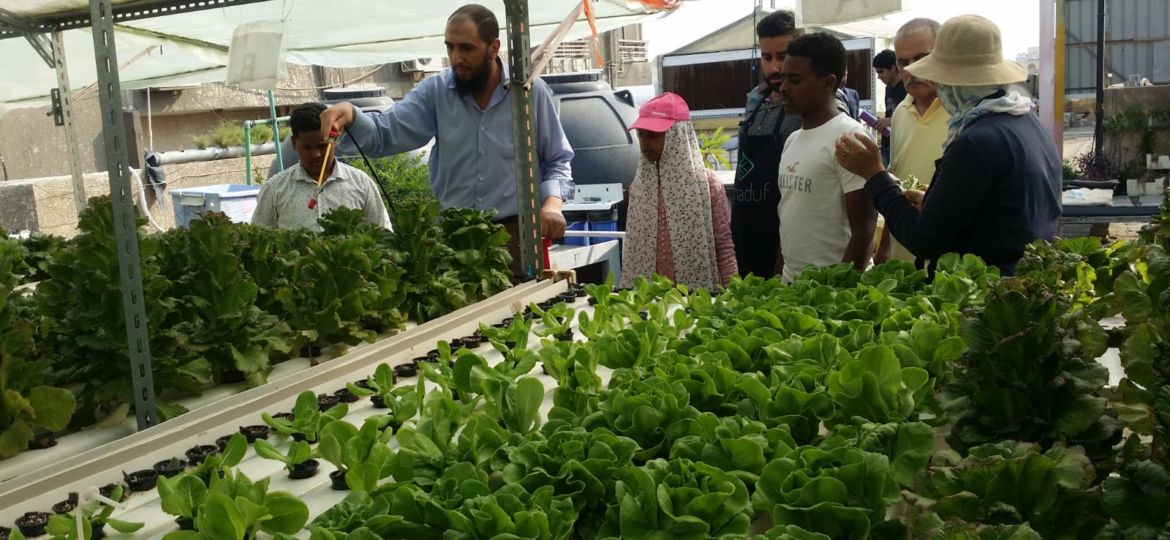
As urban populations rise and the pressure on traditional medical services increases, major actors, such as central governments, planners, public health professionals, and others, begin to try to explore other innovative ways to care for people in need.
In the midst of this, the popularity of green infrastructure (GI) or nature-based solutions (NBS), which encourages nature to integrate into the planning, design and implementation of the spaces in which people live, while enabling a range of social and environmental benefits to be possible for those who use it directly or indirectly. With this overarching term for development being used at various levels, radical examples now include community gardening, and urban (city) farms.
What are social farms?
Social farms are farms, whether urban or rural, with an additional therapeutic angle; This often allows for an element of added value to these traditional spaces while also allowing an additional income stream to supplement agricultural activities. Social farms use pre-existing agricultural land for the benefit of humans primarily through health improvements, evidenced by reduced levels of anxiety and depression, and improved work and social skills.
Why is social farming important?
Global population increase coincides with additional pressure from an aging population, particularly in the Global North. This, in turn, leads to increased stress on health care systems. We are not far from the picture. This is exactly what happened when the pressure on the medical sector increased during the spread of the Covid-19 pandemic in 2020, and this led to an urgent need to try to exploit those vacant spaces and try to integrate nature with our urban spaces. To show you my point, population increases associated with the future impacts of climate change, competition for resources, disparities through inequality and increased urbanization, make it imperative for all stakeholders to identify ways in which health and environments can be sustainably maintained, with hope of improving them.
Therefore, the use of social agriculture is an opportunity to integrate nature into health care. Therefore, space must be created to deal with the increasing pressure across this sector in the coming years.
It is worth noting that the World Health Organization indicates that those who reside in cities, such as New York, New Delhi and Cairo, are more at risk of infection, with up to four times the official rates of infection with a disease such as tuberculosis, and life in the city poses risks to the epidemiology of infectious diseases from by facilitating rapid diffusion. Urban pollution is also proving to be a health problem, with an estimated 1.2 million premature deaths worldwide each year, mainly due to cardiovascular and respiratory diseases, exacerbating conditions such as COPD. Not to mention that depression levels are higher in cities.
Live model: UK
According to recent estimates, there are approximately 299 social farms operating across the United Kingdom, with a further 90 in the Republic of Ireland. This highlights how the sector continues to grow, through the development of new sites and expansion of existing sites, which is supported by an emerging research and policy base. With the sector estimated to be: “10, 210 care farming places in the UK are provided per week, which equates to about 469,660 places per year”.
But despite this, the concept is still relatively new across the kingdom, and it currently lags behind other European countries that have an extensive network of social farms already in place, such as the Netherlands with more than 1,100. Moreover, it was found that about 67% of farms Social Security in the UK is not fully functional; An operating capacity of 63% was found to be the average for a social farm in the UK. Thus, the full potential of social farming is not currently being realized within the UK.
The real opportunity to bridge the gap between provision and access comes in the form of advances in UK policy, in particular ‘A Green Future: Our 25 Year Plan to Improve the Environment’. Within this policy there is a clear focus on social farming by: “Supporting the national expansion of care farming by 2022, tripling the number of places to 1.3 million per year for children and adults in England”. This is promising because it provides an opportunity space to engage with underserved populations by placing new social farms across accessible spaces, particularly within urban zip codes, while lowering transportation costs, increasing attendance and the overall sustainability of these projects. Indeed, the adoption of this policy demonstrates the emerging evidence base and willingness to invest in the practice, in this case by the UK Government.
I believe that the Green Future Policy demonstrates a commitment to developing natural environments, with a focus on developing social farms for the benefit of a larger population. This is developed through advocating the use of social tools to enable the development of standardized tools to ensure best practices. While the plan also suggests that there will be more support given to research nature-based interventions, development of tools and ongoing support for local authorities, commissioners and professionals – thus ensuring a targeted approach to success. However, it should be noted that this plan still fails to provide specific details of how national expansion would occur geographically, casting doubt on the vulnerability and strength of their approach.
Conclusion
In the article I highlight the disjointed approach to social farming in the UK, as an attempt to benefit from previous experiences and expertise in this regard. We hope that in the future, or even from the moment this article is published, it will reach every official or decision maker.
But it came to you… If you like the idea, you can be the change maker
Share the article with your friends and communicate with civil society organizations. The idea is to implement, not forget.














